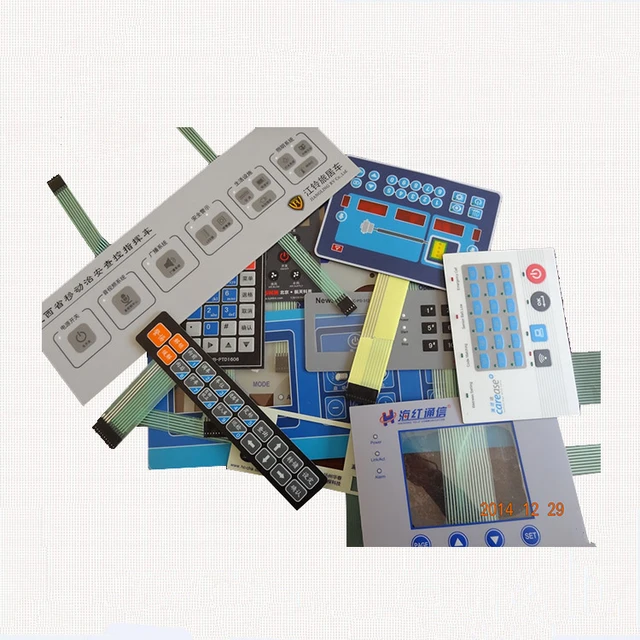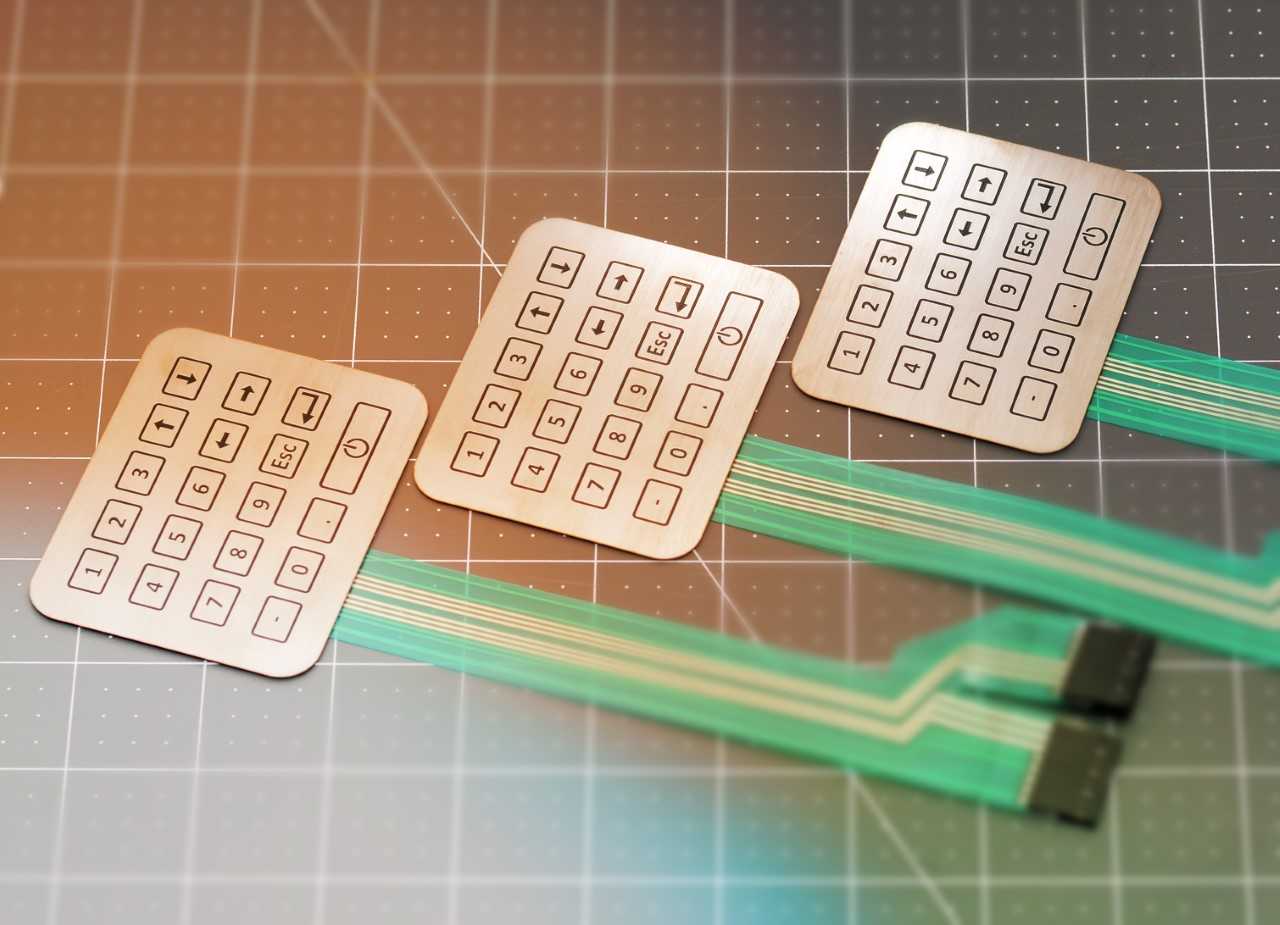Explore the Benefits of Using a Membrane Switch in Modern Devices
Explore the Benefits of Using a Membrane Switch in Modern Devices
Blog Article
The Advantages of Utilizing Membrane Layer Changes in Consumer Electronic Devices
Membrane buttons are progressively identified for their considerable advantages in customer electronics, especially in enhancing customer interaction and simplifying production procedures. Their ability to give user-friendly user interfaces and tactile responses can significantly reduce individual mistakes, while their lightweight building and construction and simplified production steps add to cost-effectiveness and quicker market access. Furthermore, the convenience in style permits tailored options that meet varied consumer needs. Yet, the ramifications of these advantages expand beyond simple capability, meaning a transformative potential for the future of electronic tools. What more advantages might emerge as this innovation advances?
Enhanced User Experience

In today's competitive landscape of customer electronics, boosted individual experience is critical; nearly 85% of customers focus on intuitive user interfaces. Membrane switches play an essential duty in accomplishing this level of functionality.
The tactile responses offered by membrane layer switches is essential for directing customer activities, guaranteeing that commands are registered accurately. This feedback mechanism decreases mistakes and enhances user contentment, cultivating a positive connection in between the individual and the tool. The personalized nature of membrane layer switches enables suppliers to tailor interfaces to certain customer needs, making devices a lot more obtainable and inviting.
Additionally, membrane switches can integrate backlighting and visuals overlays, better enhancing visibility and usability in diverse atmospheres. This flexibility makes certain that tools remain easy to use and useful, no matter the setup. In general, the combination of membrane layer switches over right into customer electronics considerably enhances customer experience, driving brand name commitment and contentment in an increasingly open market.
Affordable Manufacturing
Consumer electronics manufacturers are continuously seeking ways to balance high quality with affordability, and membrane layer buttons provide a compelling remedy for cost-efficient production. These elements are inherently simpler than traditional mechanical switches, which lowers both manufacturing expenses and complexity. The light-weight layout of membrane switches enables reduced shipping expenses and less complicated assimilation into compact tools, additionally improving their appeal in an open market.
Producers can produce membrane layer switches in high quantities, making use of economic climates of scale. This automation ability guarantees regular high quality while considerably lowering per-unit expenses. Additionally, the products used in membrane layer switches, such as polyester and polycarbonate, are often more economical than those needed for conventional button technologies, adding to overall price savings.
The production process for membrane layer switches normally requires fewer actions and less labor contrasted to various other switch kinds. This streamlined strategy not only conserves on labor costs yet also increases time-to-market, allowing companies to respond swiftly to customer demand. The mix of decreased material costs and reliable manufacturing procedures positions membrane changes as a wise financial investment for manufacturers aiming to provide top notch customer electronics at competitive price points.

Layout Versatility and Customization
While traditional mechanical buttons frequently enforce limitations on style as a result of their bulk and called for mounting systems, membrane layer switches supply unrivaled versatility and customization choices for customer electronics. This innovative innovation permits designers to produce streamlined, low-profile interfaces that can seamlessly incorporate right into different product looks, from mobile phones to cooking area appliances.
Membrane switches can be created in basically any shape or size, allowing makers to customize the format to specific ergonomic and functional demands. This versatility not just boosts customer experience but likewise enables imaginative designs that align with brand identity. The use of published graphics on membrane layer changes uses the chance for detailed layouts and vivid shades, which can be quickly customized without considerable cost implications.
In addition, membrane layer buttons can integrate several performances into a single layer, reducing the demand for several elements and simplifying setting up procedures. This streamlined layout method lessens space and weight, making it perfect for small consumer electronic devices. Generally, the style flexibility and customization capacities of membrane switches over equip manufacturers to introduce, ultimately bring about even more user-friendly and interesting products.
Durability and Integrity
As innovation continues to progress, the resilience and integrity of membrane buttons have ended up being critical factors to consider for manufacturers in the customer electronics market (membrane switch). Membrane switches are made to endure rough environmental problems, consisting of temperature changes, click dampness, and dust exposure. Their durable construction commonly involves multi-layered materials that give an effective barrier versus impurities, guaranteeing durability and regular performance

Additionally, membrane layer switches can endure a considerable variety of actuations without loss of functionality, frequently exceeding millions of cycles. This durability equates to decrease substitute costs and lowered downtime for consumers and suppliers alike. In general, the mix of ecological resilience and mechanical dependability makes membrane layer changes a calculated selection for consumer electronics, guaranteeing that tools continue to be operational and effective throughout their designated life-span.
Streamlined Item Growth
The resilience and dependability of membrane layer changes dramatically add to structured item growth in the customer electronic devices field. By incorporating these buttons early in the layout procedure, suppliers can lower the intricacy and variety of components required in their products (membrane switch). Membrane layer buttons are light-weight and compact, permitting more efficient space use within gadgets, which can cause simplified assembly processes
Moreover, the customization capabilities of membrane layer buttons allow designers to tailor functions particularly to consumer needs without sustaining extreme expenses or delays. This flexibility cultivates advancement, as business can rapidly repeat styles based on market responses, inevitably speeding up the time-to-market for new items.
The convenience of producing membrane switches additionally plays a critical function in item advancement. With modern-day printing methods and products, production can be scaled successfully, reducing preparations and minimizing waste. This causes lower manufacturing prices, improving total success.
Verdict
Finally, membrane layer switches considerably boost consumer electronics by supplying an improved individual experience, cost-efficient manufacturing processes, and flexible layout options. Their sturdiness and integrity guarantee constant efficiency in numerous environments, while streamlined product advancement promotes quicker time-to-market. These advantages collectively contribute to the advancement and capability of consumer devices, attending to the advancing look at this site demands of users efficiently. The combination of membrane layer switches over stands for a strategic choice for producers seeking to enhance item layout and efficiency.
Membrane switches are significantly recognized for their substantial advantages in customer electronics, particularly in improving individual communication and simplifying production processes. Furthermore, the products used in membrane buttons, such as polyester and polycarbonate, are often less expensive than those needed for standard button technologies, contributing to overall price savings.
The production process for membrane layer switches typically needs less actions and much less labor contrasted to find here various other button kinds. Unlike standard mechanical buttons, which may put on out over time, membrane layer changes use a closed style that minimizes the risk of mechanical failing.In verdict, membrane layer switches significantly enhance consumer electronic devices by offering a boosted individual experience, affordable manufacturing processes, and functional design options.
Report this page